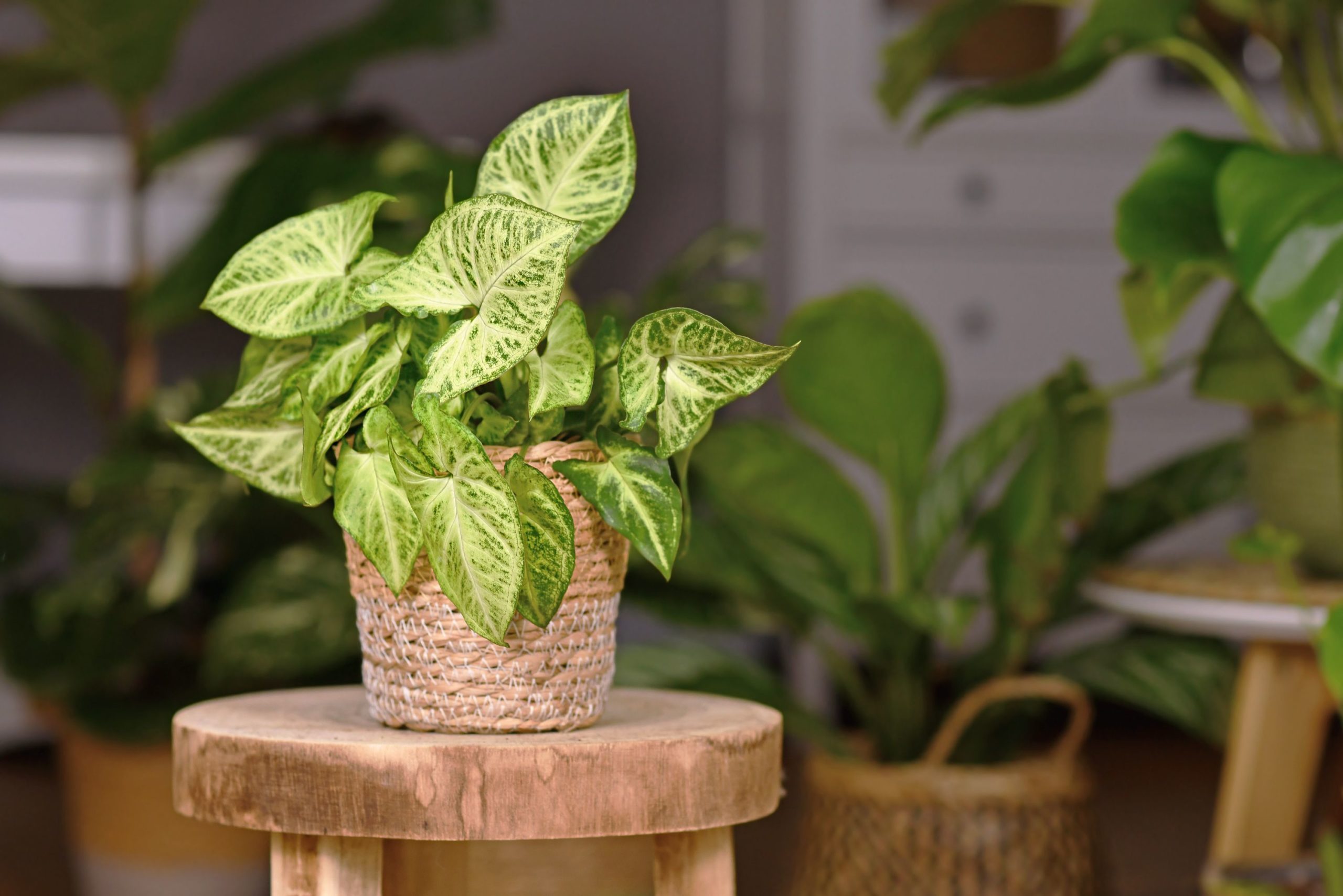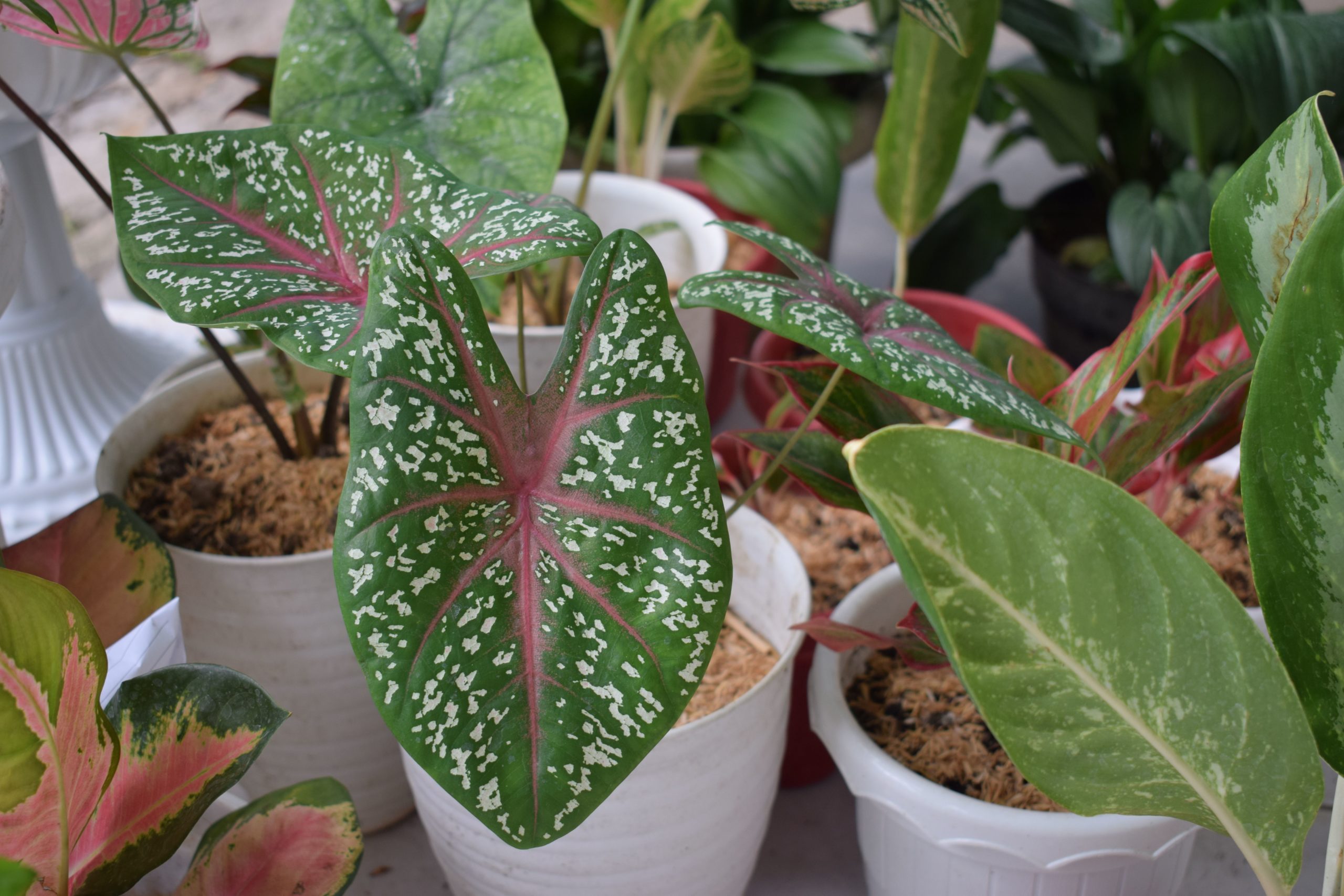One of the many challenges of collecting or growing of plants is distinguishing them from each other because a lot of them are quite similar – they seem to look the same. As a result, you end up in a tough position of which one to choose, because at the back of your mind there is a feeling of regret if you let go either one of these plants.
From afar, Caladium and Syngonium are like two brothers or sisters who seem identical yet aren’t twins. A closer inspection will show differences you never suspected. Always know which plant you’re dealing with first. Thus, we can avoid hurting plants and ensure they all get the right treatment.
Caladium and Syngonium Differences
The main difference between Caladium and Syngonium is their growing environment. Caladium is grown from a tuber whereas Syngonium is grown from adventitious roots.
These differences resulted in their unique characters and value.
Apart from their main differences, Caladium and Syngonium have other differences as well. Let’s take a closer look at it.
Root System
In relation to their taxonomy, Caladium and Syngonium also differ in terms of the root system. Knowing the taxonomy of the plants gives you an idea about the range of advantages and disadvantages of such plants.
It makes it easy to diagnose the plant as well as protect the plant from unwanted diseases.
For example, through learning their taxonomy, it has been found out that Caladiums have a hard time keeping the bulbs healthy. That means there is a lot of care that goes into the preliminary stage of the plant.
This is important to aware people of the character of Caladium before you get hold of them.
After knowing that Caladiums are sensitive during early stages, some growers opt for propagating Syngonium seedlings because they are not as sensitive as Caladium does.
Choosing Syngonium increases their chances of successful growth. As you can see, their differences in root systems play a huge part in the decision-making of growers.
Cultivars
To bounce back from its deficit in terms of the root system, Caladium offers a wide variety of cultivars, something that Syngonium is incapable of doing.
Some of the cultivars available for Caladium are orange, pink, red, and green. It gets even more interesting when you don’t know which cultivar you are getting from the nursery.
So, you will have to wait for them to grow and surprise yourself with what cultivar you got.
For starters, here are some of the popular options for Caladium cultivars:
Creamsicle
This cultivar comes in green around the corner of the leaves with white veins and red accents all over the middle. If you love the shade of red complemented by white lines, then this cultivar is for you.
White Christmas
This cultivar gives off a Christmas vibe because of its creamy and elegant white leaves symbolizing the nostalgic snow of the Christmas season.
It has green veins running along with the leaves and a green line around the corner of the leaves. Indeed, this cultivar speaks elegance and simplicity that works like magic.
Miss Muffet
This cultivar features lime-green leaves with pink spots and either pink or white veins in the middle.
Moreover, this cultivar has a stunted growth rate and an optimal height of 8 inches only making this plant a good choice for indoor planting. Not only that, but this can also be an actor for decorative purposes.
Puppy Love
This cultivar is somewhat an intense version of Creamsicle. It has green lines around the corner of the leaves and a vivid shade of pink in the middle. If you love pink, then this cultivar is for you.
Appearance
In terms of appearance, Caladium and Syngonium closely looks the same, but a closer look reveals their significant difference.
For example, Syngonium is a trailing or climbing plant and its leaves will change as they mature.
In their early stages, the leaves of Syngonium form an arrow shape but they will develop a deep lobe and divided leaf as they mature. Aside from the shape, their hues also change over time throughout the year.

A photo of the beautifull Syngonium
Caladiums, on the other hand, have large and thin leaves and resemble a flower. Since they are tuberous plants, the foliage is only available from spring to autumn. Nevertheless, Caladiums have bolder colors than Syngonium.
Soil Conditions
Caladiums prefer to grow in rich and well-draining soil with a slightly acidic pH level. Keep in mind that they are tubers, thus the soil should be kept moist and not allowed to let it dry. But water enough amount only to prevent waterlogging.
Syngonium, on the other hand, also prefers well-draining and moist soil but they are not demanding in terms of the nutrient profile of the soil. They also work well in neutral to acidic soil pH and can tolerate neglect for a while since they are vine plants.
Caladiums are quite sensitive to extreme light and letting them expose to full sunlight for longer periods will cause them to develop browning.
They are better situated in an area with full to partial shade when grown outdoors and an indirect light near the windowsill when grown indoors.
Ideally, they work well in hardiness zones 9-10 since they are tropical perennial plants.
Syngonium is best grown under partial shade but can adapt to light fluctuations. Although that is not an invitation to put Syngonium under extreme light conditions.
Normally, they will do well in hardiness zones 10-12 but sometimes they do not need that much light and you can grow them anywhere inside your house.
Toxicity
Caladiums are more toxic than Syngoniums in the sense that they are harmful to both humans and animals. When ingested by a human, they will exhibit symptoms such as swelling, vomiting, diarrhea, and eye pain.
Syngonium, on the other hand, is less toxic than Caladiums because they are only a threat to animals, not humans.
When ingested by animals, they will exhibit symptoms such as reduced appetite, signs of pain, mouth-pawing, and signs of irritation.
As a rule, keep the Caladiums and Syngoniums away from humans and animals reach.
Caladium and Syngonium Differences
After we discuss their differences, let us proceed to their similarities. A lot of people are right when they say that Caladiums and Syngoniums are similar.
However, a close look can also reveal more of their similarities than those which first met the eye.
This is a common scenario when it comes to Caladium and Syngonium. These plants closely look the same making it hard for growers and collectors to pick. But most importantly, both Caladium and Syngonium are relatively easy to grow and care for which makes it a popular plant to have.

Despite many people’s mistakes both to be similar, Caladium and Synovium have a unique set of differences. In this article, we take a closer in their similarities and differences.
Taxonomy
Although the Caladium and Syngonium belong to the same family Araceae, they began to differ in genus and species. The Caladium comes from the Caladium Vent genus. While the Syngonium comes from the Syngonium Schott genus.
Moreover, the scientific name of Caladium is Caladium Bicolor. On the other hand, the scientific name of Syngonium is Syngonium Podophyllum.
In terms of common names, the Caladium is sometimes called Heart of Jesus, Elephant Ear, and Angel Wings.
Whereas the Syngonium is sometimes called Goose’s Foot, Five Fingers, and Arrowhead Vines. All these names are inspired by their appearance which also speaks of their differences.
Origin
Generally, Caladiums and Syngoniums came from tropical forests that give them the ability to grow well in humid regions.
They are the type of plants that grow without difficulty if you provide them with the necessary elements they need.
More importantly, you can grow them together without the risk of one damaging the other—which is a common scenario to other plants.
Watering Requirements
Since they love a moist environment, that makes the Caladium and Syngonium closely similar in terms of watering requirements. Although Syngoniums can withstand neglect for a while, they still needed to be watered immediately once they dried out.
Pests and Diseases
Since they belong to the same family, it is also expected that Caladiums and Syngoniums have the same problems when it comes to pests and diseases.
The problem with this one if you grow them together will be a higher chance of infecting the other if one is suffering from pest and disease infestation.
However, the positive side of it will be no more extra research on what pest and disease control to master because they have similar pest and disease problems.
Flowering
Caladium and Syngonium are mono-flowering plants which means they only produce a single flower.
However, they normally will not produce any flowers at all especially the modern varieties. But when they do, they only produce a single flower.
Final Thoughts
Indeed, there is more than meets the naked eye when looking at these two plants. To this end, you already know that there are more differences between Caladiums and Syngoniums than there are similarities.
This is not something that makes one plant less valuable than the other, it simply means that they are both unique, and it is up to you to decide which one matches your personality.
Jenny Marie
Tribal Writer
Edited By
Patricia Godwin

